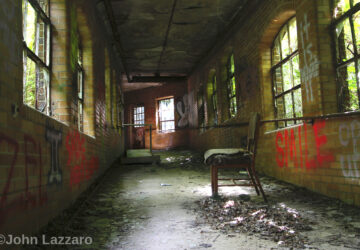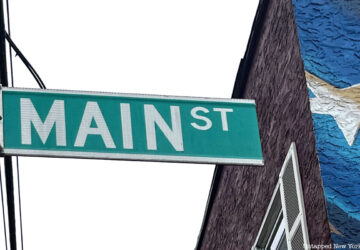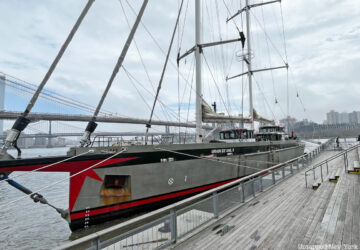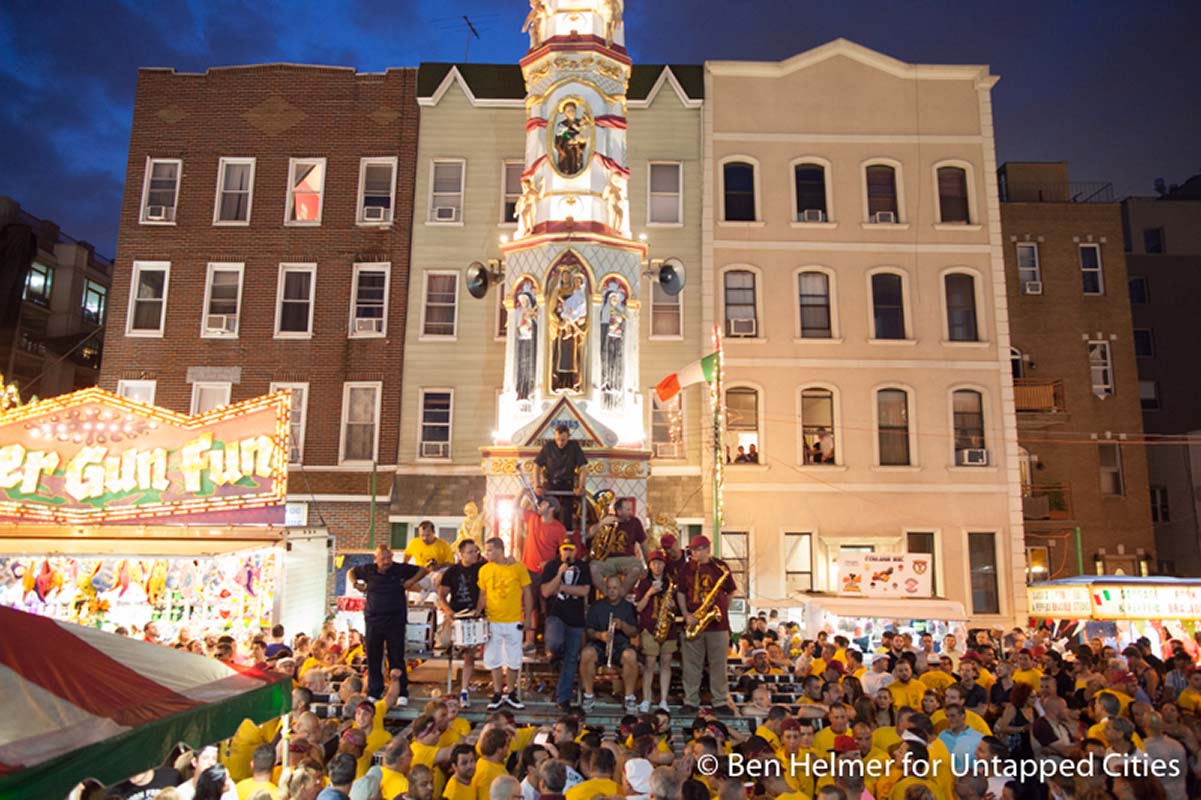A few days out of the year, bands and megaphones drown out the noise of the Brooklyn Queens Expressway in a few small blocks of Williamsburg’s Streets, as 50,000+ people come together to celebrate a tradition dating back over 1000 years: The Feast of Mt. Carmel, (The Giglio Feast). While this New York City rendition is a mere 115 years old in comparison, it is started in Nola Italy to honor the selflessness of St. Paolino, as he returned to his native shores sometime between 409-431 C.E.
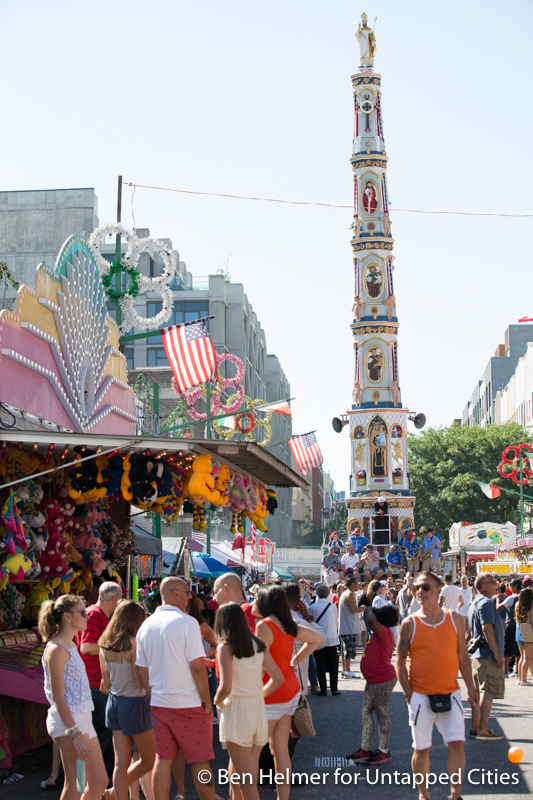
The current Brooklyn festival centers around a massive tower (called the Giglio), soaring nearly six stories into the air. Over a hundred men lift the four-ton structure, and dance it around the streets, all while an entire band sits atop the structure. The festival also features a rival Pirate Ship (also carried), and on the first day of the “Lift”, the two structures dance in rivalry, each with their own band and leader, before coming together in celebration.
Although Williamsburg is the poster child for gentrification, this festival is surely one of New York City’s older traditions, celebrated on these very streets (Havemeyer & N 8th St) in front of Our Lady of Mount Carmel Church since 1903. It predates The Feast of San Gennaro by over 25 years. Even earlier, residents from the areas around Nola, Italy, moved to this area of Brooklyn in the 1880s, when they came together to build the church that has run this festival since the 50s. The community and the church have come together to keep this event alive and strong, and this Italian/Catholic community describes it in the same breath as Christmas and Easter.
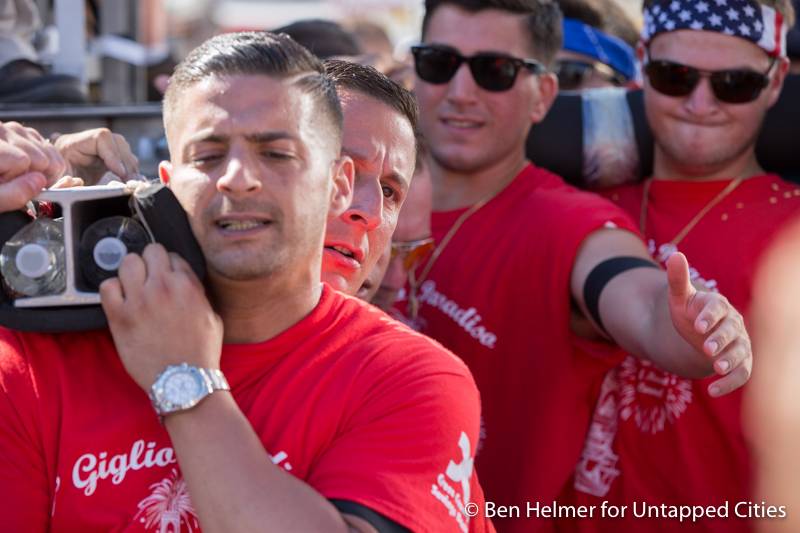
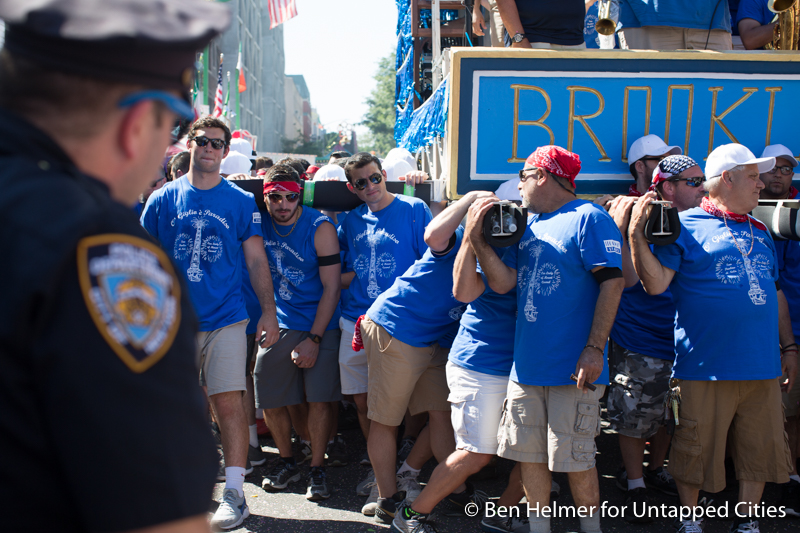
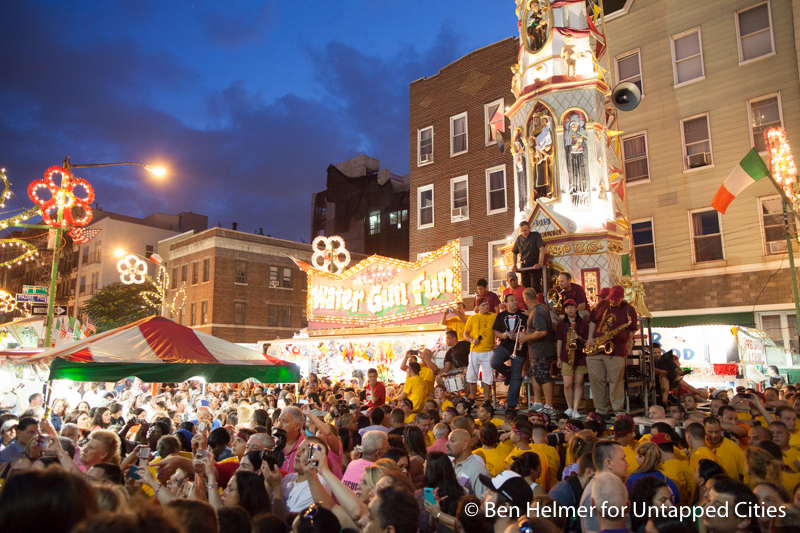
So, why St. Paolino? The story goes like this: During a village raid by North African Pirates, Bishop Paolino returned after hiding the small children safely from the invaders, only to discover many of the young men had been abducted into slavery. Paolino, in compassion, offered himself in place of some of his people, and was taken captive. Word of his good deed spread, reaching the ears of a Turkish Sultan, who was so moved, he arranged to have Paolino and his countrymen freed. As they returned home, on June 22, the people celebrated, brining lilies (or candles) to thank the Sultan, and welcome home their people.
This celebration would become the Festival of the Lilies, growing into a annual tradition around Nola, Italy. While it is not clear how long they have built these 6-story towers (Currently, the Nola festival has eight of them), there is evidence they they have paraded them around the same parade-path for over 1000 years. In Italy, these towers are made by various groups, and there is a competitive spirit to build the best one, as well as arrange their own music and dances for the massive, man-propelled obelisks.
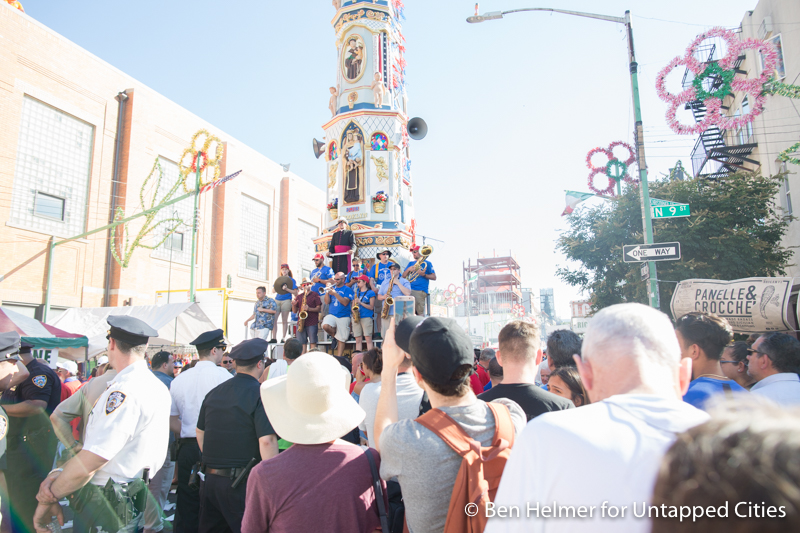
While Williamsburg’s Giglio-Fest is the oldest in New York, more recent festivals have sprung up in other areas, including Arthur Avenue in the Bronx and in East Harlem. The Brooklyn Giglio Feast is well under way, since July 5th. the festivities will conclude this weekend with a lift on Saturday, July 15th and the Our Lady of Mount Carmel’s Feast Day on Sunday, July 16th.
You really can’t understand the scale of things better than in person, as you realize a 4-ton tower, as wide as the street, is being danced vicariously past street-lights half its size, and within inches of bystanders, concession stands, and ferris wheels. They are all dwarfed by this 65 foot tower. Even the variety of modern condos that continue to spring up around the church each year struggle to surpass the peak of the Giglio. In Williamsburg, during the Feast, one thing is evident: You can build new towers, but it’s the people who make them dance.
More photos below:
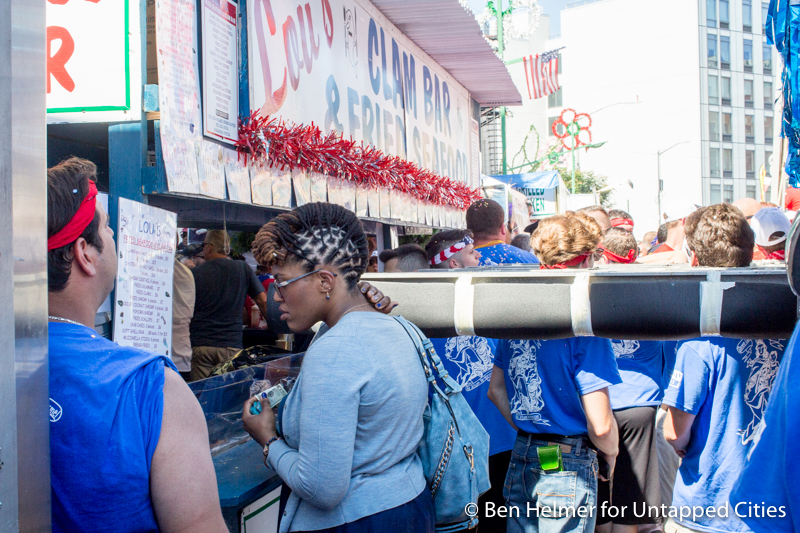
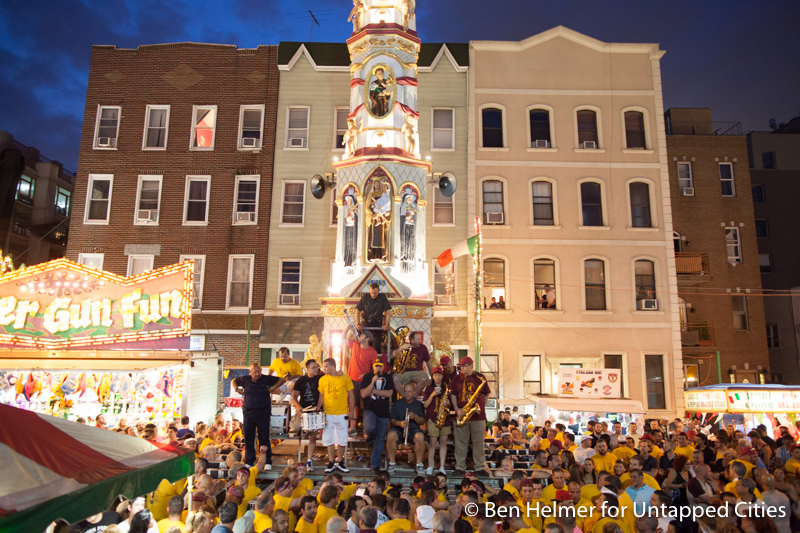
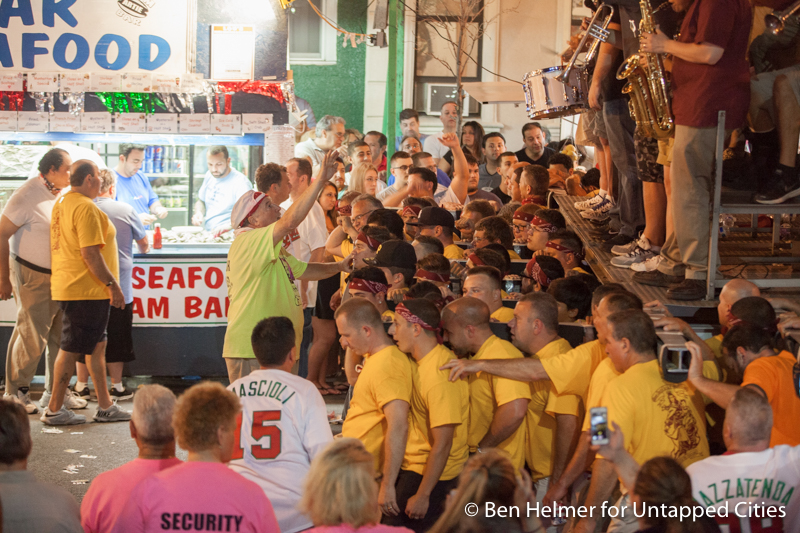
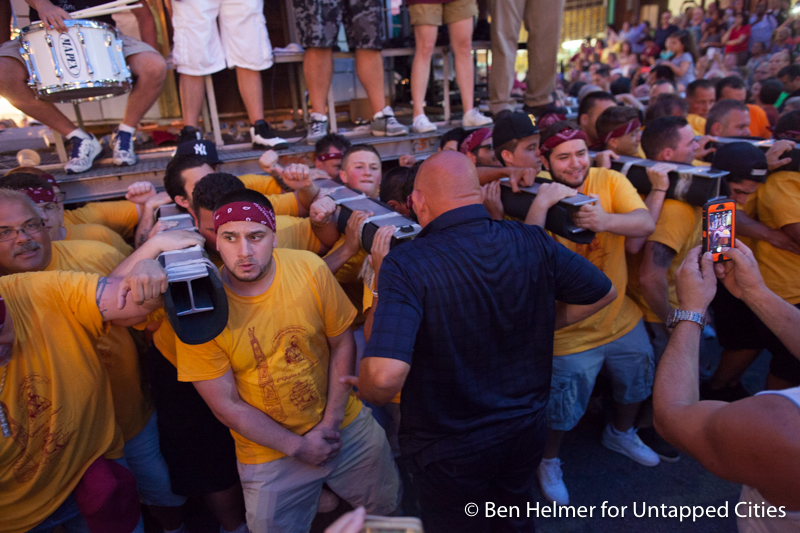
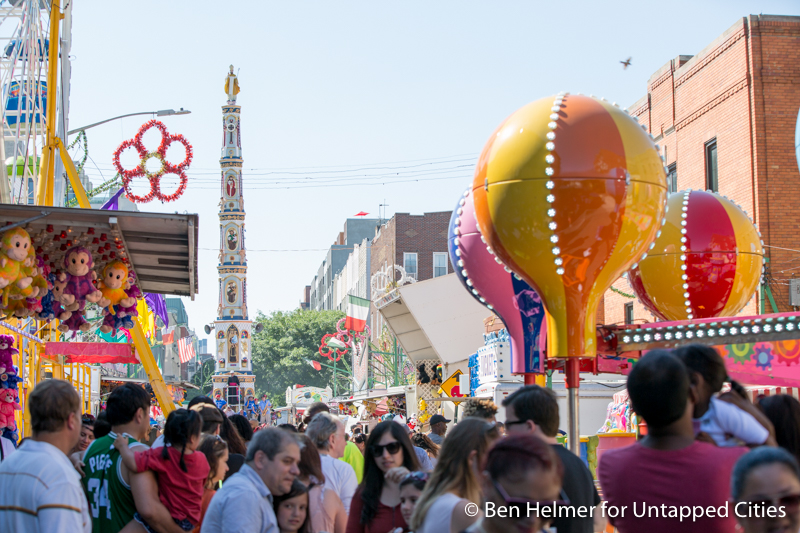
Next, check out 10 Secrets of Williamsburg

